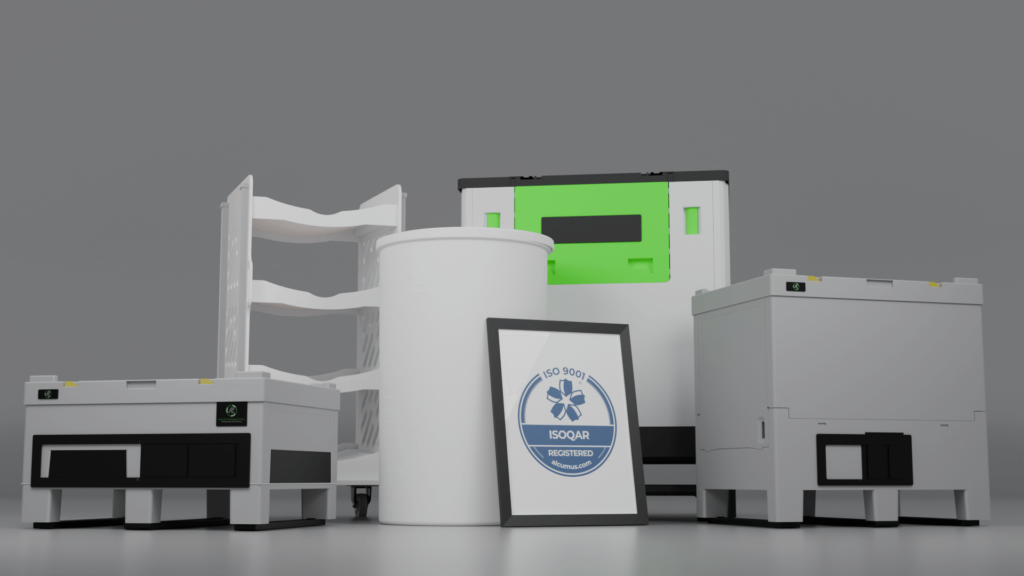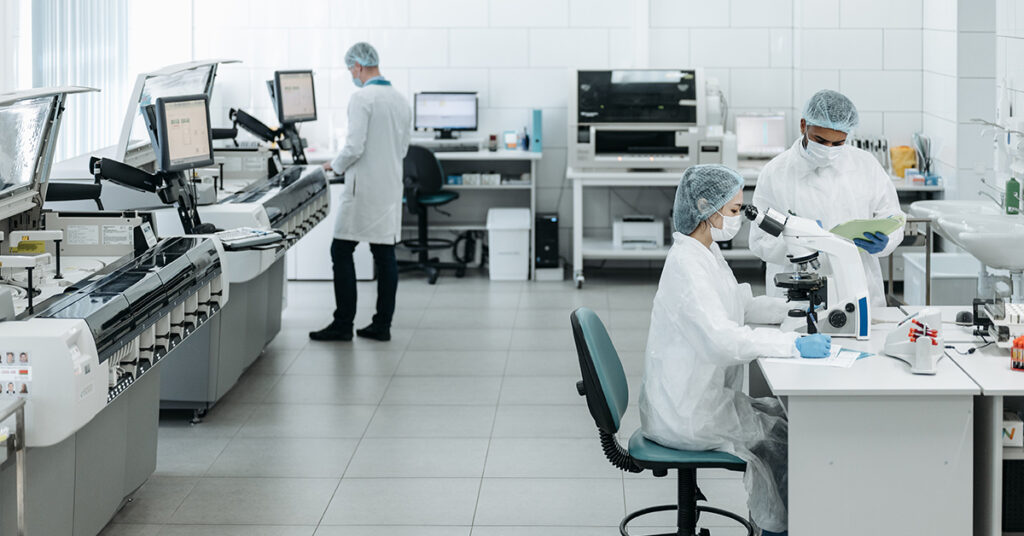ALLpaQ Innovation Company News
Why choose ALLpaQ for your fluid management needs?
Why choose ALLpaQ for your fluid management needs? Companies in the biopharmaceutical, biochemical and food production industries often look to […]
Nov 12th, 2025


Handling culture media and infectious agents has been an essential part of scientific research for many years, and has led to the development of numerous treatments, supplements and preventative vaccines.
However, keeping people safe from these biological materials and ensuring precise results are paramount to the research processes in microbiological and biomedical laboratories.
Biocontainment is integral to ensuring safety and contamination prevention – but what is biocontainment, and how is it established using bioprocess containers?
Continue reading to find out more from our experts here at ALLpaQ.
Biocontainment is a method of isolation that centres around the physical containment and handling of hazardous biological materials to prevent exposure, accidental release and contamination.
Biocontainment is part of the wider risk management in life science and biopharmaceutical research laboratories and must be taken extremely seriously. Otherwise, the consequences could be severe on product integrity and public health.

A critical element of biosafety within the laboratory environment, biocontainment is crucial for various reasons:
One of the purposes of biocontainment is to prevent the accidental release of dangerous pathogens and hazardous materials into laboratories, which can harm both humans and animals.
Handling infectious materials and biological agents is a necessary part of bioprocessing as it helps researchers understand diseases, and develop combative and preventative treatments.
However, if these extremely pathogenic organisms are released into the environment, infectious diseases that may lead to a public health emergency, such as epidemics and pandemics.
Biocontainment equipment is designed to keep cell culture mediums and other fluids contained securely and restrict accidental contamination that could pollute research and give rise to inaccurate findings.
In the biopharmaceutical sector, reducing cross-contamination and ensuring sterile fluid handling applications is imperative to ensure sample integrity.
Biocontainers shield biological materials and fluid media during transit and storage.
Keeping these resources protected from impacts or contaminants helps to keep staff safe, reduce wastage and prevent avoidable spending on replacement supplies.

To prevent exposure in biopharmaceutical laboratories, biocontainment strategies are utilised such as genetic safeguards, facility design and safety equipment.
For example, researchers may use temperature-sensitive organism strains to prevent their survival in external environments if accidental release occurs.
Laboratories are also fitted with high-efficiency particulate air filters and directional airflow systems, interlocks and barriers to keep the laboratory safe and prevent release.
Additionally, biosafety cabinets and personal protective equipment (PPE) are used to prevent the exposure of laboratory workers, such as face shields and coveralls.
Some of the most fundamental containment equipment in laboratories include biocontainers, which ensure worker protection when managing liquids and prevent contamination.
Bioprocess containers are flexible systems for essential sterile fluid-handling applications in sterile research facilities, from small to full-scale research and production.
These holders house single-use bags at various points in bioprocessing, from manufacturing and cleanroom to storage and shipping.
They may be used in scientific research facilities for holding the following:

These enclosed containers promote effective fluid management, inhibit bacterial growth and are easy to clean, whilst being completely reusable. Plus, thanks to their palleted bases, they can be efficiently stacked in warehouses, saving you precious floor space.
With this cost-effective solution, you can save money and unnecessary waste, which is key under sustainability and environmental practices.
Plus, if you desire a unique containment system for your specific and non-standard single-use bag requirements, custom biocontainers are available.

Get in touch to speak with our team
Looking to enhance the biorisk management in your facility? Or maybe you’re eager to invest in reusable bioprocess containers to make the laboratory more sustainable?
If so, we have the ideal solutions for you. To speak with our experienced professionals directly, or to discuss custom biocontainers, feel free to call us on 01472 800 373 or email us at enquiries@allpaq.com and we’ll get back to you.